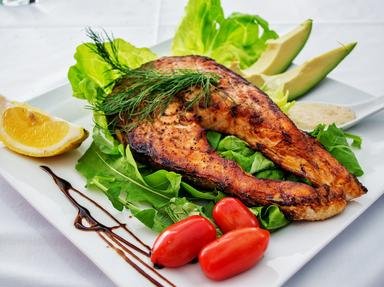
Moo Moo Moo Trivia Quiz
Chicken is called chicken. Turkey is called turkey. Other animals have different names when they are eaten as food.
A matching quiz
by bernie73.
Estimated time: 3 mins.
- Home
- »
- Quizzes
- »
- Hobbies Trivia
- »
- Food & Drink
- »
- Meats